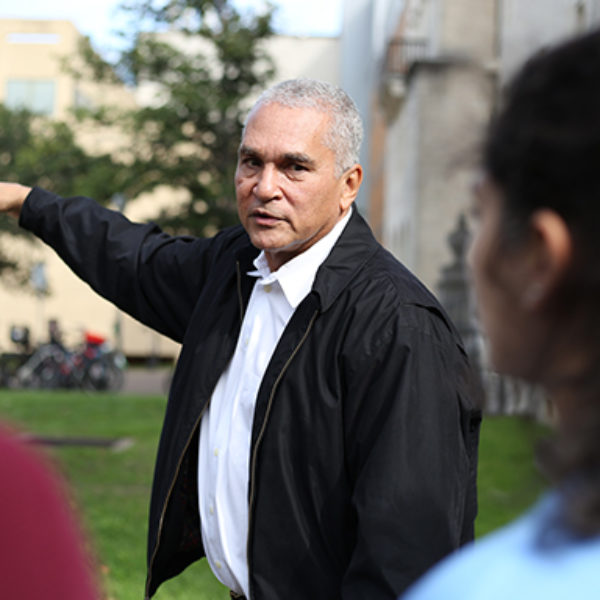Until 1956, black undergraduates were not allowed to enroll at The University of Texas at Austin. Women, though allowed to enroll from the school’s opening in 1883, did not enjoy many of the same privileges as male students over the years. For visitors, students, staffers and faculty members, these facts might seem like ancient pieces of university history. But there are parts of campus that serve as very visible reminders of the inequities of UT’s past.
Edmund T. Gordon, vice provost for diversity and associate professor of African and African diaspora studies, describes the Forty Acres as a “racialized and gendered space” because the school’s history is reflected in its physical environment. Gordon explores this relationship through his racial geography tour of campus.
“The overall message of the tour is that the racial and gendered power differentials that existed in the past are built and sedimented into the physical landscape, architecture and geography of the university campus,” he says.
Gordon says the seeds for the tour were planted when he received requests from University Housing and Dining to discuss exclusionary aspects of the university experience during Black History Month. In those conversations, Gordon talked about the ways the physical campus environment could be exclusionary, particularly regarding black students, staff members and faculty members. Statues of Confederate heroes on campus were a major point of discussion.
After those talks, Gordon began showing the landmarks to visitors himself. He says the tours “just evolved from there.”
Gordon’s racial geography tour takes visitors on a walk through campus, paying careful attention to architecture and layout. He discusses the Civil War, Reconstruction and segregation to help conceptualize campus structures, why they are there and the deeper implications they might hold.
Gordon’s tour traces the distant and recent past of an evolving campus. He points out buildings that recently have been renamed and sites where statues that have been relocated once stood. He also addresses the building names and landmarks that still honor Confederate soldiers, slaveholders and segregationists.
The popularity of the tour has led Gordon to launch a digital version. He worked in collaboration with staff members of UT’s Liberal Arts Instructional and Technology Services to build a website that includes a virtual tour. Anyone can now access his insights at any time and navigate the tour stops at their own pace.
“I am genuinely ecstatic about this project and its message, and I am so thankful to help make this invaluable information available to UT students, alumni, prospective students and individuals outside of the university system,” says Jaclyn Alford, who served as co-art director and user interface design lead on the project.
Gordon says he sees the university as a part of the national story.
“This country still hasn’t resolved its competing feelings about its national heritage,” Gordon says. “The university is in some sense caught in the middle of that.”
He says he hopes the information he shares will help improve the university’s current culture.
“If you read the past into our present cultural and social organizational reality, we should be able to discover how some of that (past) continues to structure our contemporary situation,” he explains. “And only by doing that can we move to change it.”



